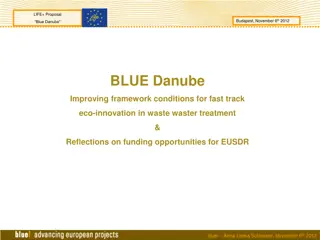Project Information and Proposal Overview
In-depth exploration of a research project including investigators, proposal rationale, methodology, sample size calculation, budget allocation, and previous project outcomes. The proposal delves into statistical analysis plans, intramural project status, regulatory requirements, and team members' experiences, providing a comprehensive overview for funding consideration.
Uploaded on Apr 19, 2025 | 0 Views
Download Presentation

Please find below an Image/Link to download the presentation.
The content on the website is provided AS IS for your information and personal use only. It may not be sold, licensed, or shared on other websites without obtaining consent from the author.If you encounter any issues during the download, it is possible that the publisher has removed the file from their server.
You are allowed to download the files provided on this website for personal or commercial use, subject to the condition that they are used lawfully. All files are the property of their respective owners.
The content on the website is provided AS IS for your information and personal use only. It may not be sold, licensed, or shared on other websites without obtaining consent from the author.
E N D
Presentation Transcript
NANOMATERIALS www.studymafia.org SUBMITTED BY: STUDYMAFIA.ORG SUBMITTED TO: STUDYMAFIA.ORG
Table Of Content What are Nanomaterials? Properties of Nanomaterials? Nanomaterial shapes Why nanomaterials ? Approaches Applications of nanomaterials Advantages of Nanomaterials Disadvantages of Nanomaterials Conclusion
What is nanomaterial Nanomaterials are commonly defined as materials with an average grain size less than 100 nanometers Nanomaterials have extremely small size which having at least one dimension 100 nm One billion nanometers equals one meter
Properties of Nanomaterials? Physical properties Size, shape, specific surface area, aspect ratio Agglomeration/aggregation state Size distribution Surface morphology/topography Structure, including crystallinity and defect structure Solubility
Properties of Nanomaterials?.... Chemical properties Structural formula/molecular structure Composition of nanomaterial (including degree of purity, known impurities or additives) Phase identity Surface chemistry (composition, charge, tension, reactive sites, physical structure, photocatalytic properties, zeta potential) Hydrophilicity/lipophilicity
Nanomaterial shapes nanomaterials can be nanoscale in one dimension ( surface films ) Two dimensions (strands or fiber) Three dimensions ( particles ) They can exist in single or fused forms with spherical, tubular, and irregular shapes.
Why nanomaterials ? Nanotechnology exploits benefits of ultra small size, enabling the use of particles to deliver a range of important benefits Small particles are invisible : Transparent Coatings/Films are attainable Small particles are very weight efficient: Surfaces can be modified with minimal material
the behavior of nanomaterials may depend more on surface area than particle composition itself. Relative-surface area is one of the principal factors that enhance its reactivity, strength and electrical properties.
Weight efficient and Uniform coverage Large spherical particles do not cover much surface area Nanoparticles Equal mass of small platelet particles provides thorough coverage (1 x 106 times more)
by patterning matter on the nano scale, it is possible to vary fundamental properties of materials without changing the chemical composition
Approaches Top-down Breaking down matter into more basic building blocks. Frequently uses chemical or thermal methods. Bottoms-up Building complex systems by combining simple atomic-level components.
Methods for creating nanostructures Mechanical grinding example of ( top-down ) method Wet Chemical example of both ( top-down) & ( bottom up )
Methods for creating nanostructures Sol-gel process
Methods for creating nanostructures Gas Phase ( furnace )
Different types of Nanomaterial Nanopowder Nanotube : tiny strips of graphite sheet rolled into tubes
Why are nanomaterials important These materials have created a high interest in recent years by their high mechanical, electrical, optical and magnetic properties.
Applications of nanomaterials Light source - QD lasers, QC (Quantum Cascade) lasers Light detector QDIP (Quantum Dot Infrared Photo-detector) Electromagnetic induced transparency (EIT) to obtain transparent highly dispersive materials Ballistic electron devices Tunneling electron devices Single electron devices
Advantages of Nanomaterials The properties of nanomaterials, particularly their size, offer various different advantages compared to the bulk-form of the materials, and their versatility in terms of the ability to tailor them for specific requirements accentuates their usefulness. An additional advantage is their high porosity, which again increases demand for their use in a multitude of industries. In the energy sector, the use of nanomaterials is advantageous in that they can make the existing methods of generating energy - such as solar panels - more efficient and cost-effective, as well as opening up new ways in which to both harness and store energy. Nanomaterials are also set to introduce a number of advantages in the electronics and computing industry. Their use will permit an increase in the accuracy of the construction of electronic circuits on an atomic level, assisting in the development of numerous electronic products.
Disadvantages of Nanomaterials Due to the relative novelty of the widespread use of nanomaterials, there is not a large amount of information on the health and safety aspects of exposure to the materials. Currently, one of the main disadvantages associated with nanomaterials is considered to be inhalation exposure. This concern arises from animal studies, the results of which suggested that nanomaterials such as carbon nanotubes and nanofibers may cause detrimental pulmonary effects, such as pulmonary fibrosis. Further possible health risks are ingestion exposure and dust explosion hazards. Additionally, there are still knowledge gaps regarding nanomaterials, meaning the manufacturing process can often be complex and difficult. The overall process is also expensive, requiring optimum results - especially regarding their use in consumer goods - in order to avoid financial losses.
Conclusion Cylinders always align along diagonal of texture, even with small wave amplitude For hydrophilic walls, small wall spacing with small wave amplitude only distorts structure For hydrophilic walls, large wall spacing with small wave amplitude promotes (1 0 0) orientation For hydrophilic walls, planar defects may be more likely if wall spacing > space needed for # of layers systems with hydrophobic walls may avoid planar defects, because the deposition of a monolayer of surfactant on the wall. The chain softness mitigates the pattern
References Wikipedia Google Studymafia pptplanet























